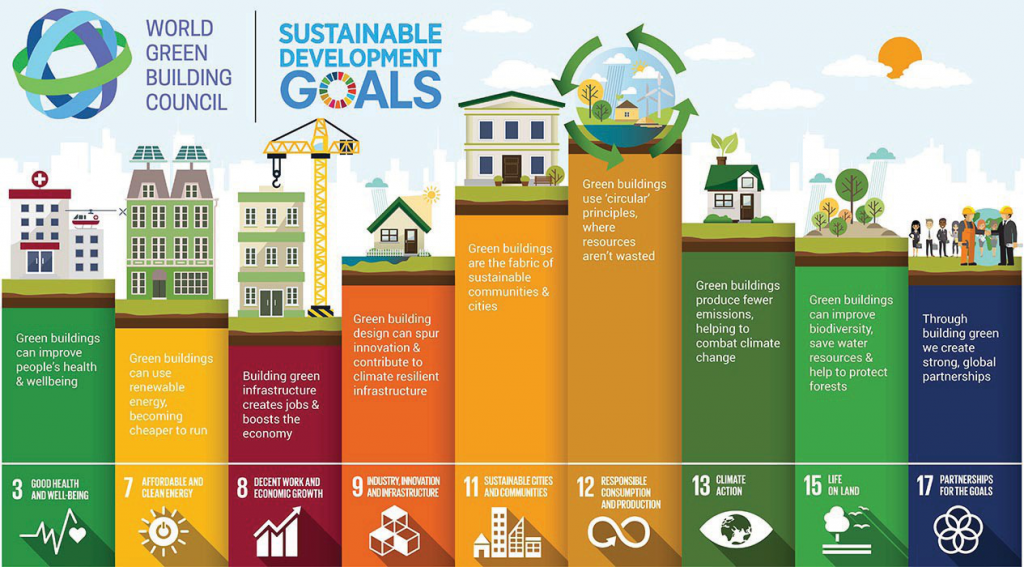
The Sustainable Development Goals (SDGs) were born at the United Nations Conference on Sustainable Development in Rio de Janeiro in 2012. The objective was to produce a set of universal goals that meet the urgent environmental, political and economic challenges facing our world.
The SDGs replace the Millennium Development Goals (MDGs), which started a global effort in 2000 to tackle the indignity of poverty.
The MDGs established measurable, universally-agreed objectives for tackling extreme poverty and hunger, preventing deadly diseases, and expanding primary education to all children, among other development priorities.
For 15 years, the MGDs recorded remarkable improvement in several important areas: reducing income poverty, providing much needed access to water and sanitation, driving down child mortality and drastically improving maternal health. They
The SDGs serves as blueprints to achieve a better and more sustainable future for all. They address the global challenges the world face, including those related to poverty, inequality, climate, environmental degradation, prosperity, and peace and justice.
also kick started a global movement for free primary education, and inspiring countries to invest in their future generations. Most significantly, the MDGs made huge strides in combatting HIV/AIDS and other treatable diseases such as malaria and tuberculosis.

The legacy and achievements of the MDGs provide valuable lessons and experience to begin work on the new goals. But for millions of people around the world the job remains unfinished.
The SDGs are a bold commitment to finish what was started, and tackle some of the more pressing challenges facing the world today. All 17 Goals interconnect, meaning success in one affects success for others. Dealing with the threat of climate change impacts how we manage our fragile natural resources, achieving gender equality or better health helps eradicate poverty, and fostering peace and inclusive societies will reduce inequalities and help economies prosper.
The SDGs are unique in that they cover issues that affect all. They reaffirm international commitment to end poverty, permanently, everywhere. They are ambitious in making sure no one is left behind. More importantly, they involve all to build a more sustainable, safer, more prosperous planet for all humanity.
The SDGs serves as blueprints to achieve a better and more sustainable future for all. They address the global challenges the world face, including those related to poverty, inequality, climate, environmental degradation, prosperity, and peace and justice. The Goals interconnect and in order to leave no one behind, it is important that we achieve each Goal and target by 2030.
Infrastructure:
Investments in infrastructure – transport, irrigation, energy and information and communication technology – are crucial to achieving sustainable development and empowering communities in many countries. It has long been recognized that growth in productivity and incomes, and improvements in health and education outcomes require investment in infrastructure.
Manufacturing is an important driver of economic development and employment. At the current time, however, manufacturing value added per capita is only US$100 in the least developed countries compared to over US$4,500 in Europe and Northern America. Another important factor to consider is the emission of carbon dioxide during manufacturing processes. Emissions have decreased over the past decade in many countries but the pace of decline has not been even around the world.
Technological progress is the foundation of efforts to achieve environmental objectives, such as increased resource and energy-efficiency. Without technology and innovation, industrialization will not happen, and without industrialization, development will not happen. There needs to be more investments in high-tech products that dominate the manufacturing productions to increase efficiency and a focus on mobile cellular services that increase connections between people.
Basic infrastructure like roads, information and communication technologies, sanitation, electrical power and water remains scarce in many developing countries.
Facts and Statistics:
• 16% of the global population does not have access to mobile broadband networks.
• For many African countries, particularly the lower-income countries, the existent constraints regarding infrastructure affect firm productivity by around 40 per cent.
• The global share of manufacturing value added in GDP increased from 15.2% in 2005 to 16.3% in 2017, driven by the fast growth of manufacturing in Asia.
• Industrialization’s job multiplication effect has a positive impact on society. Every job in manufacturing creates 2.2 jobs in other sectors.
• Small and medium-sized enterprises that engage in industrial processing and manufacturing are the most critical for the early stages of industrialization and are typically the largest job creators. They make up over 90 per cent of business worldwide and account for between 50-60 per cent of employment.
• Least developed countries have immense potential for industrialization in food and beverages (agro-industry), and textiles and garments, with good prospects for sustained employment generation and higher productivity
• Middle-income countries can benefit from entering the basic and fabricated metals industries, which offer a range of products facing rapidly growing international demand
• In developing countries, barely 30 per cent of agricultural production undergoes industrial processing. In high-income countries, 98 per cent is processed. This suggests that there are great opportunities for developing countries in agribusiness.
















